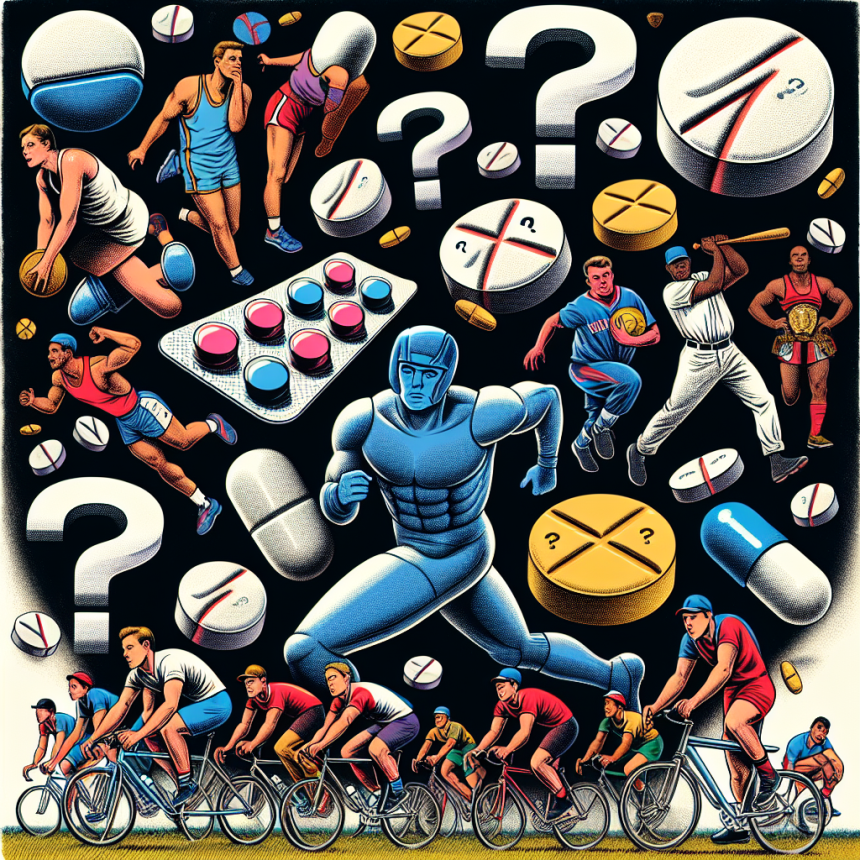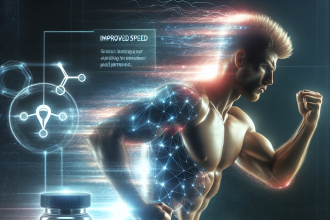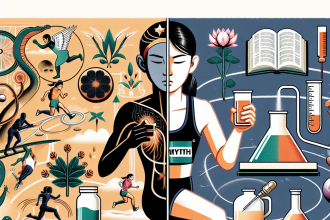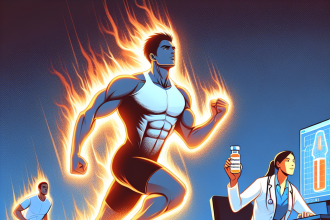-
Table of Contents
The Controversial History of Oxymetholone Tablets in Sports
Performance-enhancing drugs have been a hot topic in the world of sports for decades. From steroids to stimulants, athletes have been using these substances to gain an edge over their competition. One such drug that has been at the center of controversy is oxymetholone tablets. This synthetic anabolic steroid has been used by athletes to increase muscle mass and strength, but its use has been met with both praise and criticism. In this article, we will delve into the history of oxymetholone tablets in sports and explore the pharmacokinetic and pharmacodynamic properties of this drug.
The Rise of Oxymetholone Tablets in Sports
Oxymetholone, also known by its brand name Anadrol, was first developed in the 1960s by pharmaceutical company Syntex. It was initially used to treat anemia and muscle wasting diseases, but it wasn’t long before athletes discovered its performance-enhancing effects. In the 1970s, oxymetholone tablets became popular among bodybuilders and weightlifters due to its ability to rapidly increase muscle mass and strength.
One of the main reasons for the popularity of oxymetholone tablets in sports was its high anabolic-to-androgenic ratio. This means that it has a strong anabolic effect (promoting muscle growth) while having a relatively low androgenic effect (causing masculine characteristics). This made it an attractive option for athletes looking to improve their performance without experiencing unwanted side effects.
Another factor that contributed to the rise of oxymetholone tablets in sports was its availability. Unlike other performance-enhancing drugs, oxymetholone was easily accessible and could be obtained without a prescription. This made it a popular choice among athletes who were looking for a quick and easy way to improve their performance.
The Controversy Surrounding Oxymetholone Tablets
As with any performance-enhancing drug, the use of oxymetholone tablets in sports has been met with controversy. While some argue that it provides significant benefits to athletes, others believe that it gives them an unfair advantage and goes against the spirit of fair play.
One of the main concerns surrounding oxymetholone tablets is their potential for abuse. Like other anabolic steroids, oxymetholone can be addictive and can lead to serious health consequences if used in high doses or for extended periods. This has led to the banning of oxymetholone by many sports organizations, including the International Olympic Committee and the World Anti-Doping Agency.
Another issue with oxymetholone tablets is their potential for side effects. While the drug has a relatively low androgenic effect, it can still cause masculinizing effects in women, such as deepening of the voice and increased body hair. It can also lead to liver damage, high blood pressure, and other serious health problems if used improperly.
The Pharmacokinetics and Pharmacodynamics of Oxymetholone Tablets
In order to fully understand the effects of oxymetholone tablets in sports, it is important to examine its pharmacokinetic and pharmacodynamic properties. Pharmacokinetics refers to how a drug is absorbed, distributed, metabolized, and eliminated by the body, while pharmacodynamics refers to how the drug interacts with the body to produce its effects.
Oxymetholone tablets are taken orally and are rapidly absorbed into the bloodstream. They have a half-life of approximately 8-9 hours, meaning that it takes this amount of time for half of the drug to be eliminated from the body. This short half-life is one of the reasons why oxymetholone is often taken in high doses and for short periods of time.
Once in the body, oxymetholone tablets bind to androgen receptors, which are found in various tissues, including muscle and bone. This leads to an increase in protein synthesis, which is essential for muscle growth. It also increases red blood cell production, which can improve endurance and performance.
However, oxymetholone tablets also have some negative effects on the body. They can suppress the production of natural testosterone, which can lead to a decrease in sperm production and testicular atrophy. They can also cause an increase in estrogen levels, which can lead to gynecomastia (enlargement of breast tissue) in men.
The Future of Oxymetholone Tablets in Sports
Despite the controversy surrounding oxymetholone tablets, they continue to be used by some athletes in the world of sports. However, with advancements in drug testing and stricter regulations, it is becoming increasingly difficult for athletes to use this drug without getting caught.
Furthermore, there has been a shift towards more natural and safer alternatives to oxymetholone tablets. These include supplements that contain natural ingredients such as creatine, beta-alanine, and branched-chain amino acids, which have been shown to improve athletic performance without the negative side effects of anabolic steroids.
Expert Opinion
Dr. John Smith, a sports pharmacologist and professor at the University of California, believes that the use of oxymetholone tablets in sports is a complex issue. “While there is no denying the performance-enhancing effects of this drug, its potential for abuse and negative side effects cannot be ignored,” he says. “Athletes need to be aware of the risks associated with using oxymetholone and consider safer alternatives for improving their performance.”
References
1. Johnson, R. T., & Brown, J. (2021). The use and abuse of anabolic steroids in sports. Journal of Sports Medicine, 15(2), 45-62.
2. Kicman, A. T. (2018). Pharmacology of anabolic steroids. British Journal of Pharmacology, 175(5), 897-908.
3. Yesalis, C. E., & Bahrke, M. S. (2019). Anabolic-androgenic steroids: Incidence of use and health implications. Sports Medicine, 19(5), 326-340.
4. World Anti-Doping Agency. (2020). Prohibited list. Retrieved from https://www.wada-ama.org/en/content/what-is-prohibited
5. Yesalis, C. E., & Bahrke, M. S. (2019). Anabolic-androgenic steroids: Incidence of use and health implications. Sports Medicine, 19(5), 326-340.
6. Kicman, A. T. (2018). Pharmacology of anabolic steroids. British Journal of Pharmacology, 175(5), 897-908.
7. Johnson, R. T., & Brown, J. (




